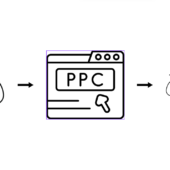Effective SEO management is crucial to sustaining high rankings and driving continuous growth in digital marketing. By adhering to a well-structured and detailed SEO maintenance plan, you can ensure that your website remains competitive, optimized, and aligned with both current and future search engine algorithms. This guide outlines the essential SEO tasks for daily, monthly, quarterly, and annual intervals, helping businesses stay ahead of the curve.
SEO Strategy: Laying the Foundation

Establish a Solid SEO Framework
An effective SEO strategy must begin with a clear, comprehensive framework. This involves aligning SEO goals with your overall business objectives. To create an actionable SEO strategy, consider:
- Targeting Keywords: Conduct in-depth keyword research to identify terms that align with user intent.
- Competitor Analysis: Regularly analyze competitors to understand their strengths and gaps.
- Content Planning: Develop a content calendar based on keyword research and industry trends.
Without this foundational approach, maintaining SEO success becomes difficult as it is easy to get lost in tactics that lack strategic depth.
Daily SEO Maintenance Tasks
1. Stay Updated with SEO Industry News
The SEO landscape is dynamic, with constant updates to search engine algorithms and emerging technologies. Keeping up with industry developments is essential. Subscribe to reputable sources such as Google’s Search Central, Moz, and Search Engine Journal. Regularly update yourself on:
- Algorithm changes (e.g., Core Web Vitals updates, AI integration in search).
- Best practices for on-page SEO.
- Emerging trends, such as voice search optimization and mobile-first indexing.
Staying informed about these changes helps in adjusting your SEO strategy proactively, ensuring you don’t fall behind your competition.
2. Monitor Website Analytics and KPIs
Tracking real-time SEO metrics allows you to identify and resolve performance issues before they escalate. Essential metrics include:
- Organic Traffic: The amount of traffic generated from search engines.
- Keyword Rankings: Track shifts in rankings for targeted keywords.
- Bounce Rate: Identify high bounce rates that may indicate poor user experience.
- Conversion Rates: Measure the effectiveness of your SEO in generating leads or sales.
Utilizing tools like Google Analytics and Google Search Console will enable you to track and act on any anomalies immediately.
3. Execute SEO Tactics
Each day should include time allocated to execute specific SEO tasks, based on the outlined strategy. This includes:
- On-Page Optimization: Refining meta tags, titles, headings, and keyword placement.
- Content Optimization: Refreshing and adding new content to maintain relevance and rankings.
- Technical SEO Fixes: Addressing site speed, mobile-friendliness, and security issues.
By taking small but consistent actions every day, SEO becomes a routine process that drives continuous improvements over time.
Monthly SEO Maintenance Tasks
1. Performance Reporting and Analysis
At the end of each month, it’s vital to assess SEO performance by reviewing the metrics gathered daily. This allows you to spot larger trends and evaluate the impact of SEO efforts. Key performance indicators (KPIs) to assess include:
- Traffic Growth: Compare organic traffic month over month.
- Conversion Rate: Review the lead or sales conversion metrics.
- Keyword Performance: Analyze keyword ranking fluctuations.
Establish a custom reporting framework and compare month-to-month and year-to-date data to identify areas of success or those requiring improvement.
2. Evaluate Completed SEO Tasks
Assess the tasks accomplished during the month and compare them against the SEO plan. Questions to ask include:
- Were the established goals for the month achieved?
- Did any obstacles prevent the completion of key tasks?
- What adjustments need to be made in the upcoming month?
This evaluation helps inform your strategy going forward, allowing you to optimize your SEO efforts continuously.
3. Plan for the Next Month
Using insights from monthly performance reviews, it’s important to tweak your tactics and plan for the upcoming month. Areas that may require attention include:
- Content Development: Planning new blog posts or page updates based on performance data.
- On-Page Adjustments: Updating existing content, improving keyword targeting, or fixing broken links.
- Link Building: Refining your link-building strategy based on competitor analysis.
This strategic adjustment ensures agility and keeps your SEO plan aligned with the latest trends and performance.
Quarterly SEO Maintenance Tasks
1. Comprehensive Technical SEO Audits
A quarterly technical SEO audit is critical to identifying and fixing underlying issues that may not be apparent in day-to-day operations. This audit should cover:
- Site Speed: Ensure your website loads quickly across all devices.
- Mobile Usability: Mobile-friendliness is crucial, with mobile-first indexing becoming increasingly important.
- Structured Data: Check the accuracy of schema markup and ensure search engines can easily interpret your content.
Regular audits will help ensure that technical issues do not hinder your website’s ability to rank effectively.
2. On-Page SEO Auditing
A quarterly audit of on-page elements helps ensure that your website’s content remains in line with SEO best practices. This includes:
- Meta Tags and Descriptions: Ensure they are optimized for keywords and compel clicks.
- Content Updates: Refresh outdated content and eliminate duplicates.
- Internal Linking Structure: Ensure it supports both user navigation and SEO objectives.
A quarterly review guarantees that technical updates, changes, or shifts in best practices are integrated into your site’s structure.
3. Link Profile Review
Backlinks are a significant ranking factor, and their quality and quantity can significantly impact your SEO. A quarterly link profile audit should include:
- Backlink Quality: Assess the quality of your backlinks and disavow any harmful links.
- Link Growth: Ensure you are attracting new, high-quality backlinks.
- Competitor Analysis: Evaluate the backlink strategies of competitors to uncover new link-building opportunities.
A strong and healthy link profile is crucial for SEO success, and regular reviews ensure that you remain on track.
Annual SEO Maintenance Tasks
1. Yearly Performance Review and ROI Measurement
At the end of the year, it’s important to step back and assess the overall effectiveness of your SEO efforts. This should include:
- Comparing Yearly Traffic and Conversions: Analyze how much your traffic has grown year over year.
- Measuring ROI: Calculate the return on investment (ROI) for your SEO efforts. This can include tracking revenue from organic traffic and comparing it to SEO expenses.
A yearly review provides valuable insights into the long-term success of your SEO strategy and can inform adjustments for the upcoming year.
2. Refining Strategy and Setting New Goals
SEO is an evolving field, and what works today may not be as effective in the future. Use annual performance data to set new goals and refine your strategy for the following year. This could include:
- Setting New Targets: Defining more ambitious targets for the coming year based on past performance.
- Implementing New SEO Trends: Consider emerging trends, such as AI-driven search or voice search optimization.
Strategic planning based on long-term trends ensures that your SEO efforts remain competitive and forward-looking.
Conclusion: SEO Success is a Continuous Journey
SEO is not a one-time task; it is a continuous process that requires consistent effort and strategic foresight. By implementing a comprehensive SEO maintenance checklist, focusing on daily, monthly, quarterly, and annual tasks, businesses can maintain and improve their online visibility year-round. By staying updated, monitoring performance, and executing both tactical and strategic actions, your SEO efforts will not only maintain rankings but also drive long-term business success.





